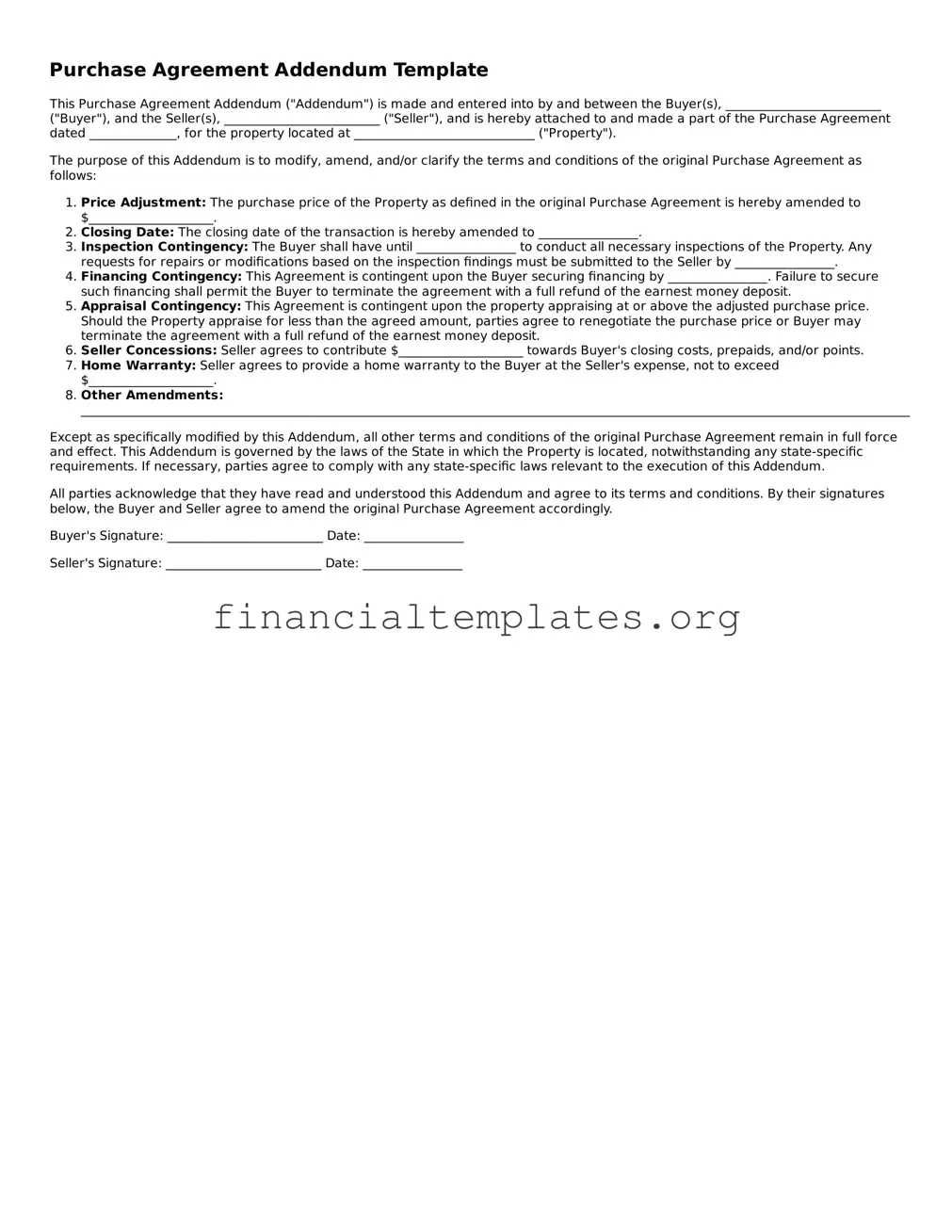Purchase Agreement Addendum Template
This Purchase Agreement Addendum ("Addendum") is made and entered into by and between the Buyer(s), _________________________ ("Buyer"), and the Seller(s), _________________________ ("Seller"), and is hereby attached to and made a part of the Purchase Agreement dated ______________, for the property located at _____________________________ ("Property").
The purpose of this Addendum is to modify, amend, and/or clarify the terms and conditions of the original Purchase Agreement as follows:
- Price Adjustment: The purchase price of the Property as defined in the original Purchase Agreement is hereby amended to $____________________.
- Closing Date: The closing date of the transaction is hereby amended to ________________.
- Inspection Contingency: The Buyer shall have until ________________ to conduct all necessary inspections of the Property. Any requests for repairs or modifications based on the inspection findings must be submitted to the Seller by ________________.
- Financing Contingency: This Agreement is contingent upon the Buyer securing financing by ________________. Failure to secure such financing shall permit the Buyer to terminate the agreement with a full refund of the earnest money deposit.
- Appraisal Contingency: This Agreement is contingent upon the property appraising at or above the adjusted purchase price. Should the Property appraise for less than the agreed amount, parties agree to renegotiate the purchase price or Buyer may terminate the agreement with a full refund of the earnest money deposit.
- Seller Concessions: Seller agrees to contribute $____________________ towards Buyer's closing costs, prepaids, and/or points.
- Home Warranty: Seller agrees to provide a home warranty to the Buyer at the Seller's expense, not to exceed $____________________.
- Other Amendments: ___________________________________________________________________________________________________________________________________________________________.
Except as specifically modified by this Addendum, all other terms and conditions of the original Purchase Agreement remain in full force and effect. This Addendum is governed by the laws of the State in which the Property is located, notwithstanding any state-specific requirements. If necessary, parties agree to comply with any state-specific laws relevant to the execution of this Addendum.
All parties acknowledge that they have read and understood this Addendum and agree to its terms and conditions. By their signatures below, the Buyer and Seller agree to amend the original Purchase Agreement accordingly.
Buyer's Signature: _________________________ Date: ________________
Seller's Signature: _________________________ Date: ________________
